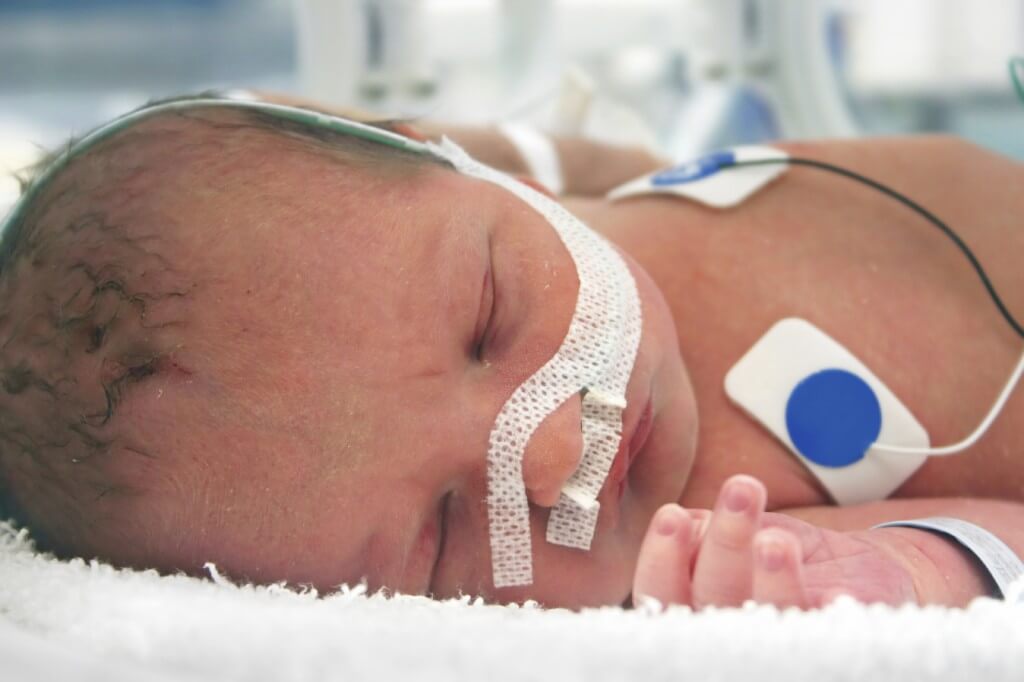The Most Common Birth Injuries

7/29/2019 Medical Malpractice John Whitfield
Most soon-to-be parents eagerly await the birth of their new family members, blissfully unaware of the myriad of things that can go wrong during pregnancy, childbirth, and thereafter. Getting the proper prenatal care can help prevent some issues related to childbirth, but the birthing process itself can be fraught with danger including birth injuries.
During the birthing process, a baby may suffer a physical injury called birth trauma or birth injury. Birth injuries to babies are normally caused by a problem during or just after delivery. Many parents won’t even know what to look for to determine whether or not their child has been injured during childbirth. As medical malpractice lawyers, we want to make parents aware of the most common types of birth injuries and how to identify them.
Common Birth Injuries Due to Medical Malpractice and How to Identify Them
Facial paralysis: Pressure on a baby’s face may injure the facial nerve. This can occur during a vaginal delivery with or without the use of forceps, but it often occurs when physicians use forceps or vacuum extraction to pull the baby out. If the nerve was only bruised, the paralysis usually improves in a few weeks. If the nerve was torn, surgery may be needed.
Signs and Symptoms: The injury is often seen when a baby cries. There is no movement on the injured side of the face and the eye cannot be closed.
Brachial palsy: Brachial palsy occurs when a cluster of nerves that controls the arms and hands called the brachial plexus is injured. If a physician pulls too hard or incorrectly while attempting to deliver the baby, the brachial plexus can be damaged, especially in cases of shoulder dystocia. Conditions include Erb’s palsy and Klumpke’s palsy. If the injury caused bruising and swelling around the nerves, movement should return within a few months. Tearing of the nerve may result in permanent nerve damage. Special exercises are used to help maintain the range of motion of the arm while healing occurs.
Signs and Symptoms: The baby loses the ability to flex and rotate his or her arm.
Cerebral Palsy: Two to three of every 1,000 children born may have cerebral palsy. Improper monitoring of the laboring mother, inadequate birth techniques, and failure to monitor fetal distress during labor can all lead to cerebral palsy. In some cases, surgery may help, but there is no cure. Cerebral palsy often requires lifetime medical care and can lead to additional health issues.
Signs and Symptoms: This is a permanent neurological condition affecting cognition, mobility, and development. Parents should look for a lack of motor skill development, weak muscles, and muscle spasms. This condition can also lead to vision and hearing impairments, learning disabilities, and speech problems.
Brain Damage: Brain damage may be caused by any number of factors, including exposure to toxins, anoxia, hypoxia, or physical trauma to the baby’s head during delivery. Brain injuries are one of the most serious forms of birth injuries, as they are usually permanent.
Signs and Symptoms: Every brain injury is different, and the symptoms and severity can vary greatly. Brain injured babies can exhibit physical and mental symptoms. Brain injured babies may suffer from developmental delays, and may not reach key milestones in time or at all (such as crawling, walking or talking).
Nashville Injury Lawyers
If you believe your child suffered a birth injury, get medical attention right away. Timely and proper treatment can increase the odds your child’s condition will improve. Our experienced Nashville medical malpractice lawyers have successfully handled birth injury cases for Tennessee families, and we would be happy to speak with you about your situation. Contact us today for a free and confidential consultation.
